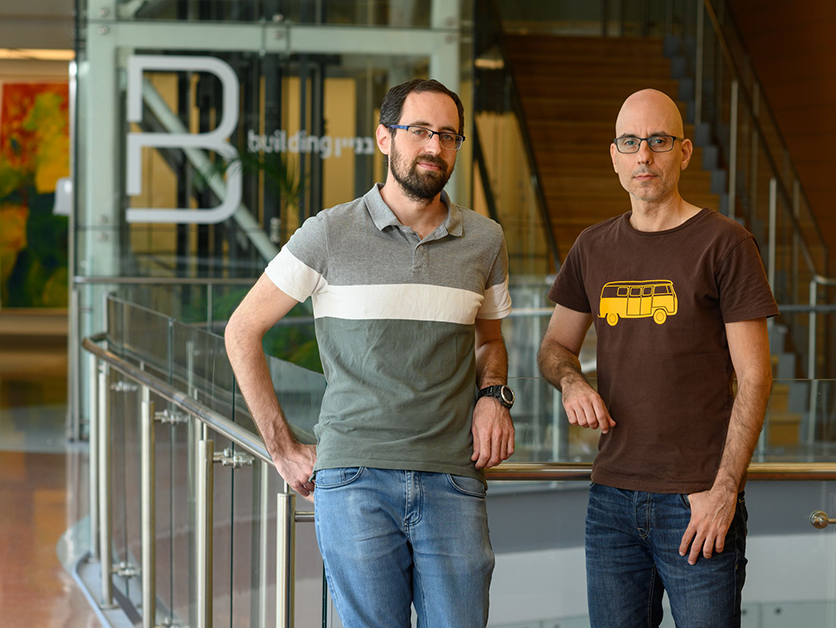Are you a journalist? Please sign up here for our press releases
Subscribe to our monthly newsletter:
If the biological clocks present in virtually every cell of our body ticked out loud, would their sound amount to a chaotic cacophony or a harmonious hum? Are the ticking clocks in our tissues synchronized by the central clock in our brains, like an orchestra directed by a conductor? The “clocks” and the “orchestra conductor” are, of course, metaphors for genetic networks controlling circadian rhythms, which keep our bodies adjusted to the day-night cycle. But these metaphors capture the essence of a genuine scientific quest: understanding how the circadian rhythms are regulated.
Until several years ago, scientists thought that the master clock in the brain was a tyrannical conductor that brought into line all the sections of the orchestra, from the head on down. In the past few years, however, studies have shown that clocks in peripheral organs – that is, all organs other than the brain – are sometimes out of step with the one in the brain, but these clocks were collectively viewed as a uniform group. A new Weizmann Institute of Science study reveals that there are “cross-rhythms” even within that group. A research team headed by Prof. Gad Asher of the Biomolecular Sciences Department has shown that these clocks can, under certain conditions, behave more like a jazz band, in which different instruments break into their own rhythms, with some attuned to the dominant rhythmic pattern, others ignoring it altogether, and still others ticking to a syncopated beat.

Circadian clocks in the body respond to different cues – light, food, oxygen levels, stress – but they all rely on similar molecular machinery: a self-regulating network of several genes that shuts itself off when its gene expression exceeds a certain level. The clocks, in turn, control the rhythmic expression of genes in the relevant organs, enabling these organs to optimize their function at different periods of the day-night cycle.
In the new study, doctoral student Gal Manella led experiments to test how clocks in different peripheral tissues and organs respond to the same circadian cue: food. The researchers fed mice at unusual times – during the day, rather than at night, their normal feeding time – and monitored the expression of all their genes to see how their peripheral clocks and rhythms responded to the different feeding schedules. In particular they wanted to check whether the clock in the liver, an organ that plays a central role in processing nutrients, regulated the clocks and rhythms in other peripheral tissues. To this end, they used transgenic mice that lacked the liver clock and compared the findings related to these mice with those from unmodified ones.
The researchers fed mice at unusual times and observed that while circadian clocks in the liver and fat tissue responded to these changes, clocks in other organs only partially shifted their beat or not at all
The study revealed that the daytime feeding triggered a jam session of out-of-step rhythms in the peripheral clocks of the unmodified mice. The liver clock shifted its ticking by exactly twelve hours, in step with the shift in the feeding schedule, as did the clock in fat tissue. But overall, the clock in the liver didn’t set the pace for those of other organs. Thus, the one in the lungs kept ticking as usual, without responding in the least to the change in feeding times. Clocks in the heart and kidneys were somewhere in between, ticking to a syncopated beat: shifting their phase by four to eight hours.
“It makes sense for peripheral clocks in various body organs to tick autonomously to a certain degree because they respond to different cues from the environment, depending on that organ’s function – so there’s no reason for clocks, say, in the lungs to respond to changes in meal schedule,” Asher says.

Surprisingly, however, the scientists found that the liver clock did affect the rhythms of gene expression in other tissues, even though without controlling their peripheral clocks. They thus concluded that the liver clock served as a buffering mechanism that protected various organs from nutritional disruptions, without connection to their clocks. Apparently, it did so by releasing glucose when its levels dropped unpredictably, owing to the reversal in feeding times, which in turn helped maintain regular rhythms. In mice lacking the liver clock, this fine-tuning failed to occur, and the glucose levels went through more severe ups and downs, upsetting the rhythms in certain peripheral organs.
“Our findings shed new light on the interactions between rhythmic processes in different tissues,” Manella says.
The study’s findings may be relevant to a variety of situations in which the interaction between peripheral clocks and other rhythms in the body is disturbed. For example, an in-depth understanding of such interactions may help clarify the causes of an increased incidence of disease in shift workers, whose work patterns upset their circadian clocks. It might also have a bearing on unraveling the effects of diets that alter the timing of meals, for instance, intermittent fasting. And it might provide insights into metabolic diseases characterized by disrupted communication between body organs: high blood glucose, obesity and other disorders collectively known as the “metabolic syndrome.”
The research team included Dr. Elizabeth Sabath, Dr. Rona Aviram, Vaishnavi Dandavate, Saar Ezagouri, Dr. Marina Golik and Dr. Yaarit Adamovich, all of Weizmann’s Biomolecular Sciences Department.

The number of circadian clocks in the human body is roughly the same as the number of its cells: approximately 37 trillion.
Prof. Gad Asher's research is supported by the Sagol Institute for Longevity Research.